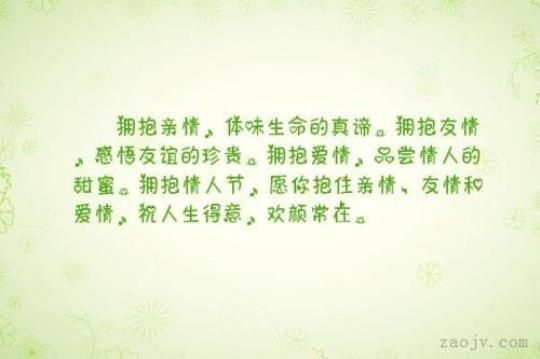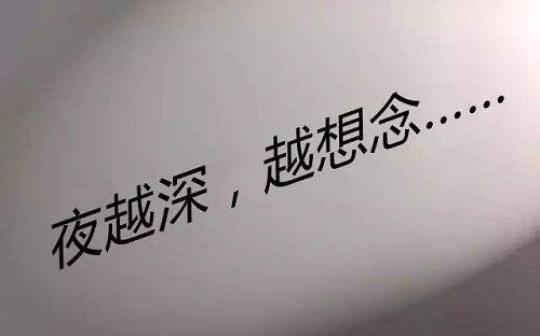关于有及物动词的优美句子大全
2024-08-03 来源:互联网 【 字体:大 中 小 】
关于有及物动词的优美句子大全

本文主要为您介绍关于有及物动词的优美句子大全相关句子,欢迎阅读分享!
第1篇. 及物动词的句子及物; she hit me. i often play football after class. i see an apple on the desk. please clean the classroom
carefully . i an watching TV
不及物;i want to know more about you . can you pass it to me ? i spend much money on these books.
please pay for what you have bought. i arrive at school on five o'clock
系动词: it smell so nice . i feel uncomfortable in this atmosphere. the story sounds very exciting.
the soup tastes too salty to eat. it looks unbelievable,but it happened.
情态动词 i can do it very well. she might be the first one to go there . it couldn't be better.
she maybe forget that thing after so long time. you must be careful when you cross the road.
助动词 i don't understand what you said. it doesn't matter. do you have a pen friend ? did you have a good meal? i did it at last.
第2篇. 及物动词的句子按这个分类,应该分为五类动词:
①本身意思完整的动词称为不及物动词,后面不跟宾语.如:
John came.
Mary was playing.
②表示动作由主语传到另一人或物的称为及物动词,动作所传及的这个人或物称为宾语,如:
John saw a cat.
Mary was playing basketball.
We like Mary.
这些动词告诉我们看见什么,玩什么及喜欢谁.
③双宾动词有两个宾语,第一个是表人宾语,亦称间接宾语,第二个是表物宾语,亦称直接宾语,如:
He gave me some books.
I teach John French.
④系动词都跟有一个主语的补语.补语不同于宾语,不承受主语的动作,而是说明主语的特点,如:
He is a good teacher.
She became thin.
第3篇. 关于及物动词及物动词 transitive verbs(vt.) 其实所谓“及物”,就是后面可直接加宾语的动词,有被动形式,而不及物动词是没有被动式的,也不可直接加宾语,需加上介词。
如see 看见 (vt.) +宾语 I can see a boy. 及物动词后面可直接接宾语,不及物动词后面不可直接加宾语,一般要加介词后再接宾语。实际上很多动词既是及物动词,又是不及物动词。
举一个例子,就说write。如I am writing.和I am writing a letter.在前一个句子write是不及物动词,在后一个句子write是及物动词。
又如,see是及物动词,但在特殊情况下如seeing is believing就是不及物动词。
第4篇. 含有实意动词的句子实义动词:及物动词(带宾语);不及物动词(不带宾语).实义动词意思完全,能独立用作谓语.实义动词有及物动词和不及物动词(及物动词是指后面要求有直接宾语的动词;不及物动词指后面不需要跟宾语的动词) 即行为动词,表示动作的动词.它分为及物动词和不及物动词两种 及物动词 后面必须跟宾语意义才完整的实义动词,叫做及物动词(transitive verb).如: I believe that the committee will consider our suggestion.我相信委员会将会考虑我们的建议. “How long can I keep the book ?”Harry asked.哈里问:“这本书我可以借多久?” Dr. Bethune set us a good example. 白求恩大夫给我们树立了好榜样. Crude oil contains many useful substances.原油含有许多有用的物质. 2)不及物动词 本身意义完整后面不须跟宾语的实义动词,叫做不及物动词(intransitive verb).如: Birds fly.鸟会飞. It happened in June 19三二.这件事发生于一九三;年六月. My watch stopped.我的表停了. She spoke at the meeting yesterday evening. 她在昨天晚上的会上发了言. 3)兼作及物动词和不及物动词 英语里有不少实义动词可以兼作及物动词和不及物动词.这样的动词又有两种不同的情况: a)兼作及物动词和不及物动词时,意义不变.试比较: Shall I begin at once?我可以立刻开始吗?(begin作不及物动词) She began working as a librarian after she left school.她毕业后当图书馆管理员.(began作及物动词) When did they leave Chicago?他们是什么时候离开芝加哥的?(leave 作及物动词) They left last week. 他们是上周离开的.(left 作不及物动词) b)兼作及物动词和不及物动词时,有时意义不尽相同.如: Wash your hands before meals.饭前要洗手. Does this cloth wash well? 这布经得起洗吗? 4) 与汉语的比较 有时英语动词的及物和不及物的用法,与汉语的用法不一样,请注意下列两种情况: a)有的动词在英语里只能用作不及物动词,而汉语则可用作及物动词,如arrive到达,agree同意,1isten听.英语里这些动词后面常接介词.如: We arrived at the railway station at noon.我们于中午到达火车站.(at不能省去)(比较:We reached the railway station at noon.) Everybody listened to the lecture with great interest.每个人都很有兴趣地听讲课.(to不可省去)(比较:We all heard the lecture.) Do they agree to the plan?他们同意这个计划吗?(to不可省去) b)有的动词在英语里能用作及物动词,而在汉语里则不能用作及物动词,如serve为…服务. Our children are taught to serve the people wholeheartedly.我们的儿童被教以全心全意为人民服务 实义动词的用法 实义动词词义完整,能独立作谓语,可分成:及物动词(transitive verb)和不及物动词(intransitive verb).一.及物动词要求有宾语 ①Mr.Smith gave his wife twenty pounds for her birthday.史密斯先生给了他的妻子20英镑过生日.②He asked the teacher a few questions.他向老师问了几个问题. ③We have friends all over the world.我们的朋友遍天下. ④Children and young people like bright colors.孩子和年轻人喜欢亮丽的颜色. 二.不及物动词不要求宾语 ① Most shops in Britain open at 9:00 A.m. and close at 5:00 or 5:30 in the evening .英国大部分商店九点开门,晚五点或五点半关门. ②George's father lives there.乔治的爸爸住在那里. ③Let's go home.我们回家吧. ④The examination ended at 11:30 A.m.考试上午十一点半结束. 三.特殊实义动词 英语动词很多既是及物动词又是不及物动词,如 close, begin, study, leave, work等. ①The post office closes at 9:00 p. m.邮局晚上9点关门. ②Close the window, please.请关窗. ③Shall we begin now?我们现在开始吗? ④ Bill began working as a sailor after he left school.比尔毕业后当水手. ⑤They left yesterday.他们昨天离开的. ⑥When did you leave Washington?你什么时候离开华盛顿的? ⑦The students study hard.这些学生学习努力. ⑧The students study English and German.这些学生学习英语和德语. ⑨He works in a supermarket.他在一家超市工作. ⑩He works the machine on Mondays.他星期一操作这台机器.三.实义动词,也叫行为动词.就我们现在所学的内容来讲,实义动词所在的句子中一般不存在be动词.也就是在含有实义动词的句子变否定句或疑问句时,一定不能用be动词.那么,实义动词究竟怎样用呢?正如be动词随着主语的变化可变为am、is、are一样,实义动词在肯定句中,也要随着主语的变化而变化.当主语为第三人称单数he,she, it时,实义动词要变为相应的第三称单数;当主语为非第三人称单数I, you(你), we,you(你们) they时,实义动词要用动词的原形.而在变否定句和疑问句时,不能直接在动词上变,而是要借助另一类动词:助动词do、does.(1)肯定句:① I have a blue book.② He has a brother.③ She wants to be a teacher.④ They like to play basketball.(2)否定句:主语+don't/doesn't+动词原形.其中do/does为助动词,是来帮助实义动词构成否定或疑问句的,但加了do/does后,其后面的动词必须。
第5篇. 5个含有感官动词(全过程)的句子 英语后面并附汉语意思感官动词 see, watch, observe, notice, look at, hear, listen to, smell, taste, feel + do 表示动作的完整性,真实性;+doing 表示动作的连续性,进行性。
I saw him work in the garden yesterday.
昨天我看见他在花园里干活了。(强调"我看见了"这个事实)
She smelt something burning and saw smoke rising.
她闻到有东西着了,还看见烟在冒。
I watched them rehearsing the play.
我看着他们排练那场戏
We saw him leave the house.
我们看见他离开了家。
I heard him make arrangements for his journey.
我听见他安排他的旅行。
I felt the car skidding.
我感觉到汽车在打滑。
第6篇. 请帮忙,及物动词的句子更换,和不及物动词就写No changeThe barber is cutting his hair.
----- He is having a hair cut
She agrees with my decision to finish school.
----- No change
Beyonce sang my favorite song at the concert.
----- My favourite song was sang by Beyonce at the concert.
Erin has invited me to her party.
----- I have been invited to Erin's party
He laughed hysterically after hearing the comedian's joke.
----- No change
I talk to my friends before going to bed each night.(这句的确有被动语态形式,但不自然。)
----- My friends are talked to (by me) before going to bed each night
Joe was finishing his homework.(这句不应该有被动语态,否则太不像英语了)
------ No change
Amy is going to buy a new car next year.
------ A new car is going to be bought by Amy next year.









